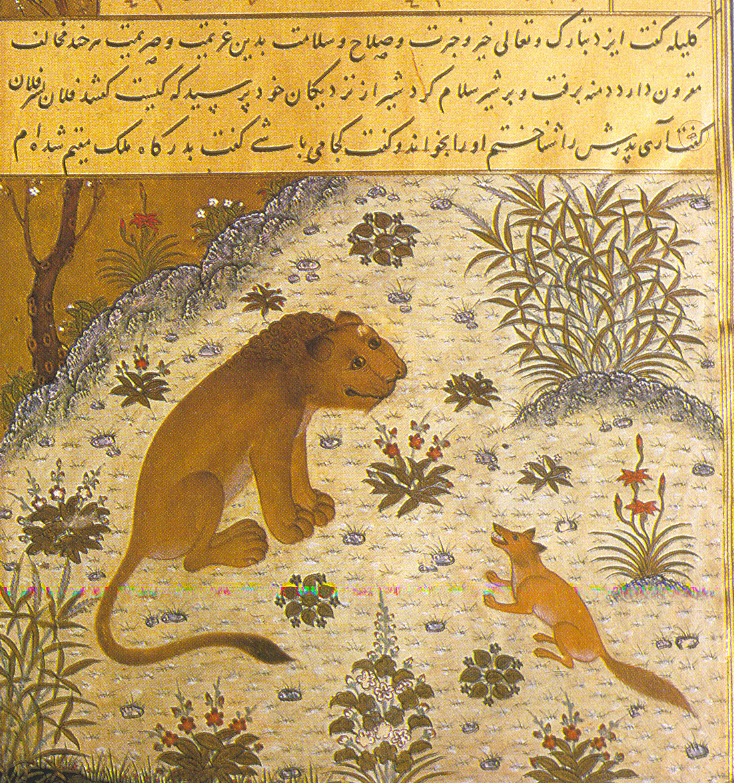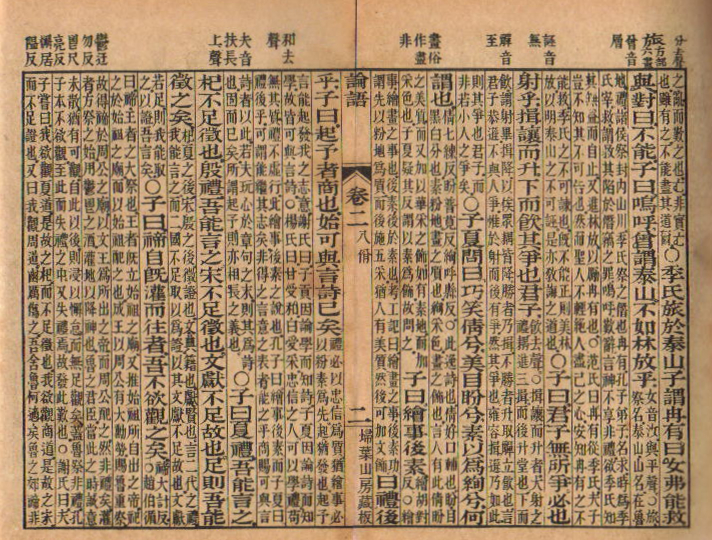|
Sabk-i Hindi
Indian style, also known as ''Sabk-i Hindi'' () was a literary style in Persian poetry. The term was coined because poets and writers who were affiliated with Indian courts during the Mughal era were particularly notable for incorporating the characteristics typically associated with this style into their works. Some modern Iranian scholars have recommended using the names "''sabk-i Isfahani''" or "''sabk-i Safavi''" instead of ''sabk-i Hindi'' (Indian style) because the poets of the Safavid court in Isfahan during the 17th and early 18th century wrote in a similar manner. See also * Khorasani style (poetry) * Persian language in the Indian subcontinent Before British colonisation, the Persian language was the lingua franca of the Indian subcontinent and a widely used official language in the northern India. The language was brought into South Asia by various Turkics and Afghans and was prese ... References Sources * {{EI2, last=de Bruijn, first=J.T.P., volume=8, t ... [...More Info...] [...Related Items...] OR: [Wikipedia] [Google] [Baidu] |
Persian Poetry
Persian literature comprises oral compositions and written texts in the Persian language and is one of the world's oldest literatures. It spans over two-and-a-half millennia. Its sources have been within Greater Iran including present-day Iran, Iraq, Afghanistan, Pakistan, the Caucasus, and Turkey, regions of Central Asia (such as Tajikistan), South Asia and the Balkans where the Persian language has historically been either the native or official language. For example, Rumi, one of the best-loved Persian poets, born in Balkh (in modern-day Afghanistan) or Wakhsh (in modern-day Tajikistan), wrote in Persian and lived in Konya (in modern-day Turkey), at that time the capital of the Seljuks in Anatolia. The Ghaznavids conquered large territories in Central and South Asia and adopted Persian as their court language. There is thus Persian literature from Iran, Mesopotamia, Azerbaijan, the wider Caucasus, Turkey, Pakistan, Bangladesh, India, Tajikistan and other parts of Centra ... [...More Info...] [...Related Items...] OR: [Wikipedia] [Google] [Baidu] |
Mughal Empire
The Mughal Empire was an Early modern period, early modern empire in South Asia. At its peak, the empire stretched from the outer fringes of the Indus River Basin in the west, northern Afghanistan in the northwest, and Kashmir in the north, to the highlands of present-day Assam and Bangladesh in the east, and the uplands of the Deccan Plateau in South India.. Quote: "The realm so defined and governed was a vast territory of some , ranging from the frontier with Central Asia in northern Afghanistan to the northern uplands of the Deccan plateau, and from the Indus basin on the west to the Assamese highlands in the east." The Mughal Empire is conventionally said to have been founded in 1526 by Babur, a Tribal chief, chieftain from what is today Uzbekistan, who employed aid from the neighboring Safavid Iran, Safavid and Ottoman Empires Quote: "Babur then adroitly gave the Ottomans his promise not to attack them in return for their military aid, which he received in the form of the ... [...More Info...] [...Related Items...] OR: [Wikipedia] [Google] [Baidu] |
Safavid Iran
The Guarded Domains of Iran, commonly called Safavid Iran, Safavid Persia or the Safavid Empire, was one of the largest and longest-lasting Iranian empires. It was ruled from 1501 to 1736 by the Safavid dynasty. It is often considered the beginning of History of Iran, modern Iranian history, as well as one of the gunpowder empires. The Safavid List of monarchs of Persia, Shāh Ismail I, Ismā'īl I established the Twelver denomination of Shia Islam, Shīʿa Islam as the Safavid conversion of Iran to Shia Islam, official religion of the empire, marking one of the most important turning points in the history of Islam. An Iranian dynasty rooted in the Sufi Safavid order founded by sheikhs claimed by some sources to be of Kurds, Kurdish origin, it heavily intermarried with Turkoman (ethnonym), Turkoman, Georgians, Georgian, Circassians, Circassian, and Pontic Greeks, Pontic GreekAnthony Bryer. "Greeks and Türkmens: The Pontic Exception", ''Dumbarton Oaks Papers, Vol. 29'' (1975), ... [...More Info...] [...Related Items...] OR: [Wikipedia] [Google] [Baidu] |
Isfahan
Isfahan or Esfahan ( ) is a city in the Central District (Isfahan County), Central District of Isfahan County, Isfahan province, Iran. It is the capital of the province, the county, and the district. It is located south of Tehran. The city has a population of approximately 2,220,000, making it the third-most populous city in Iran, after Tehran and Mashhad, and the second-largest metropolitan area. Isfahan is located at the intersection of the two principal routes that traverse Iran, north–south and east–west. Isfahan flourished between the 9th and 18th centuries. Under the Safavid Iran, Safavid Empire, Isfahan became the capital of Iran, for the second time in its history, under Abbas the Great. It is known for its Persian architecture, Persian–Islamic architecture, Muslim architecture, grand boulevards, covered bridges, palaces, tiled mosques, and minarets. Isfahan also has many historical buildings, monuments, paintings, and artifacts. The fame of Isfahan led to the ... [...More Info...] [...Related Items...] OR: [Wikipedia] [Google] [Baidu] |
Khorasani Style (poetry)
Khorāsānī style (Persian: سبک خراسانی ''sabk-i Khorāsānī'' 'the style of Khurāsān', ', also transliterated ''Khurāsānī'') was a movement in Persian poetry associated with the court of the Ghaznavids, associated with Greater Khorasan (now divided between Iran, Afghanistan, Tajikistan, and Uzbekistan). History The term was coined in the early twentieth century. It is traditionally considered to characterise the first period of New Persian poetry, running from the ninth century CE into the second half of the twelfth. It is characterized by its plain poetic technique, concrete images and metaphors, and some archaic linguistic features. While showing limited use of Arabic loan-words, poetry in this style was influenced by Arabic verse, particularly in terms of its prosody, and the dominant genre was the praise-poem. The Khurāsānī period was succeeded by the '' sabk-i ‘Irāqī'' ('style of Iraq'), with its greater use of Arabisms, more elaborate metaphors and ... [...More Info...] [...Related Items...] OR: [Wikipedia] [Google] [Baidu] |
Persian Language In The Indian Subcontinent
Before British colonisation, the Persian language was the lingua franca of the Indian subcontinent and a widely used official language in the northern India. The language was brought into South Asia by various Turkics and Afghans and was preserved and patronized by local Indian dynasties from the 11th century, such as Ghaznavids, Sayyid dynasty, Tughlaq dynasty, Khilji dynasty, Mughal dynasty, Gujarat sultanate, and Bengal sultanate. Initially it was used by Muslim dynasties of India but later started being used by non-Muslim empires too. For example, the Sikh Empire, Persian held official status in the court and the administration within these empires. It largely replaced Sanskrit as the language of politics, literature, education, and social status in the subcontinent. The spread of Persian closely followed the political and religious growth of Islam in the Indian subcontinent. However Persian historically played the role of an overarching, often non-sectarian language co ... [...More Info...] [...Related Items...] OR: [Wikipedia] [Google] [Baidu] |
Persian Literature
Persian literature comprises oral compositions and written texts in the Persian language and is one of the world's oldest literatures. It spans over two-and-a-half millennia. Its sources have been within Greater Iran including present-day Iran, Iraq, Afghanistan, Pakistan, the Caucasus, and Turkey, regions of Central Asia (such as Tajikistan), South Asia and the Balkans where the Persian language has historically been either the native or official language. For example, Rumi, one of the best-loved Persian poets, born in Balkh (in modern-day Afghanistan) or Wakhsh (in modern-day Tajikistan), wrote in Persian and lived in Konya (in modern-day Turkey), at that time the capital of the Seljuks in Anatolia. The Ghaznavids conquered large territories in Central and South Asia and adopted Persian as their court language. There is thus Persian literature from Iran, Mesopotamia, Azerbaijan, the wider Caucasus, Turkey, Pakistan, Bangladesh, India, Tajikistan and other parts of Cent ... [...More Info...] [...Related Items...] OR: [Wikipedia] [Google] [Baidu] |
History Of Literature
The history of literature is the historical development of writings in prose or poetry that attempt to provide entertainment or education to the reader, as well as the development of the literary techniques used in the communication of these pieces. Not all writings constitute literature. Some recorded materials, such as compilations of data (e.g., a check register) are not considered literature, and this article relates only to the evolution of the works defined above. Ancient (Bronze Age–5th century) Early literature is derived from stories told in hunter-gatherer bands through oral tradition, including myth and folklore. Storytelling emerged as the human mind evolved to apply causal reasoning and structure events into a narrative and language, allowing early humans to share information with one another. Early storytelling provided opportunity to learn about dangers and social norms while also entertaining listeners. Myth can be expanded to include all use of patterns and s ... [...More Info...] [...Related Items...] OR: [Wikipedia] [Google] [Baidu] |
Persian-language Literature
Persian ( ), also known by its endonym and exonym, endonym Farsi (, Fārsī ), is a Western Iranian languages, Western Iranian language belonging to the Iranian languages, Iranian branch of the Indo-Iranian languages, Indo-Iranian subdivision of the Indo-European languages. Persian is a pluricentric language predominantly spoken and used officially within Iran, Afghanistan, and Tajikistan in three mutual intelligibility, mutually intelligible standard language, standard varieties, respectively Iranian Persian (officially known as ''Persian''), Dari, Dari Persian (officially known as ''Dari'' since 1964), and Tajik language, Tajiki Persian (officially known as ''Tajik'' since 1999).Siddikzoda, S. "Tajik Language: Farsi or not Farsi?" in ''Media Insight Central Asia #27'', August 2002. It is also spoken natively in the Tajik variety by a significant population within Uzbekistan, as well as within other regions with a Persianate society, Persianate history in the cultural sphere o ... [...More Info...] [...Related Items...] OR: [Wikipedia] [Google] [Baidu] |




